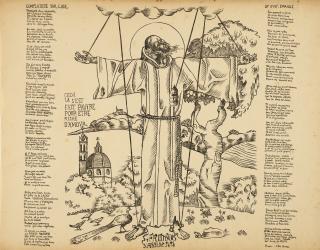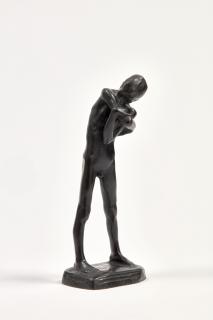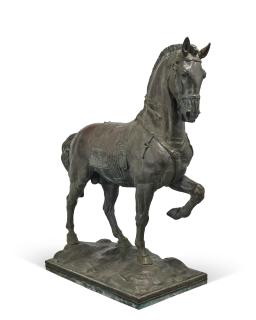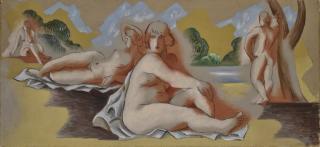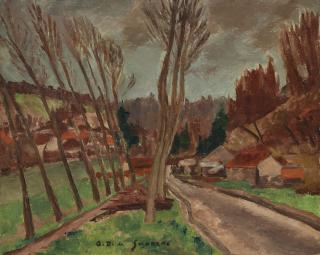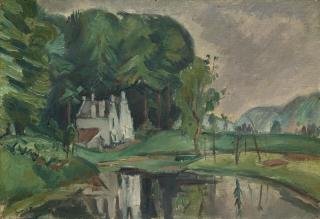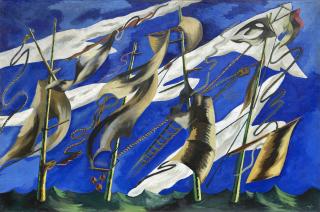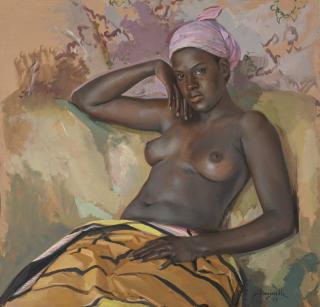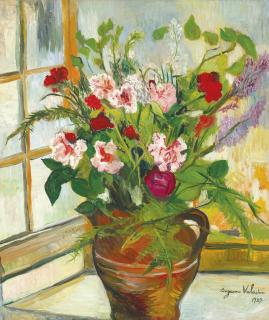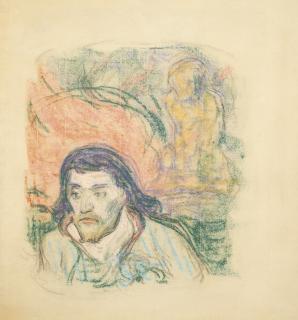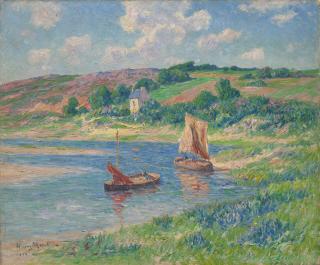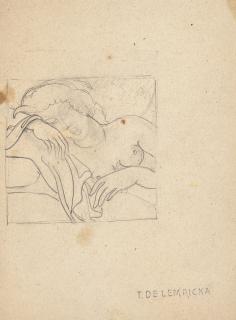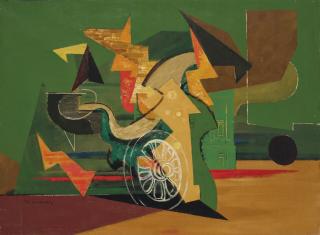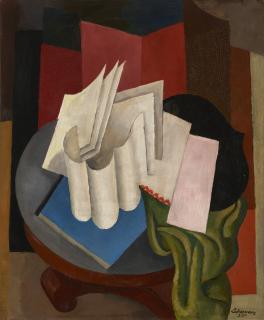- Art.Salon
- Artists
- Émile Bernard
- Nature morte (carafe, verre, fruits, assiettes, tasse et cafetière)

Émile Bernard
Nature morte (carafe, verre, fruits, assiettes, tasse et cafetière)
Found at
Christies,
Paris
Art Impressionniste & Moderne, Lot 180
10. Apr - 10. Apr 2024
Art Impressionniste & Moderne, Lot 180
10. Apr - 10. Apr 2024
Estimate: XX.XXX
Price realised: XX.XXX
Price realised: XX.XXX
Description
Émile Bernard fut l'un des talents les plus précoces de la génération symboliste. A l'âge d'à peine vingt ans, ce jeune artiste accompli montrait une connaissance parfaite de la leçon de Cézanne et des grands maîtres, mais aussi un tempérament personnel affirmé. Autant pour rendre hommage au maître aixois que pour marquer sa différence, Émile Bernard entreprit de consacrer une importante part de l'année 1888 au thème de la nature morte. Dans cette Nature morte à la carafe et aux fruits, le jeune peintre déploie une grande richesse décorative, en mélangeant sur une nappe blanche immaculée et légèrement froissée une coupelle de fruits, un carafon de cristal et son verre, différentes piéces de porcelaine agencées de façon complexe. De Cézanne, Bernard conserve les effets de perspective plongeante et un cadrage serré. Mais la mise en scène, la préciosité des matières et la transparence moirée des verreries inscrivent son oeuvre dans l'héritage des grands flamands. Quant au choix des couleurs et les superbes associations réalisées par Bernard dans cette composition, il révèle sa sensibilité impressionniste et sa connaissance des lois de la division optique initiée par Georges Seurat. Cette capacité du jeune artiste à allier modernité à classicisme avait fait l'admiration de Van Gogh, installé à Arles et qui entretenait une relation d'amitié très proche avec Émile Bernard et Paul Gauguin à cette époque.
Émile Bernard was one of the most precocious talents of the Symbolist generation. At the age of barely 20, this accomplished young artist showed perfect awareness of the teachings of Cézanne and the great masters, as well as personal self-assurance. As much in homage to the Provencal master as to distinguish himself, Émile Bernard chose to spend much of 1888 on the theme of still life. In this Nature morte à la carafe et aux fruits, the young painter uses a wide decorative range, by placing a dish of fruit, a crystal carafe and matching glass, and various pieces of complicatedly arranged porcelain on an immaculate, slightly creased, white tablecloth. From Cézanne, Bernard retained the plunging perspective effect and tight framing. But the layout, the extreme meticulousness of the materials and the shimmering transparency of the glass objects, places his work in the tradition of the great Flemish painters. And the colour palette and superb associations achieved by Bernard in this composition reveal his Impressionist sensibility and his knowledge of the laws of optical division initiated by Georges Seurat. The artist's capacity to ally modernity with Classicism had aroused the admiration of Van Gogh, who lived in Arles and was very close friends with Émile Bernard and Paul Gauguin during this period.
- Atelier de l’artiste. | Collection Altarriba, Paris (par descendance). | Galerie René Drouet, Paris. | Sam Josefowitz, Pully (acquis auprès de celle-ci vers 1962). | Puis par descendance aux propriétaires actuels.
Émile Bernard was one of the most precocious talents of the Symbolist generation. At the age of barely 20, this accomplished young artist showed perfect awareness of the teachings of Cézanne and the great masters, as well as personal self-assurance. As much in homage to the Provencal master as to distinguish himself, Émile Bernard chose to spend much of 1888 on the theme of still life. In this Nature morte à la carafe et aux fruits, the young painter uses a wide decorative range, by placing a dish of fruit, a crystal carafe and matching glass, and various pieces of complicatedly arranged porcelain on an immaculate, slightly creased, white tablecloth. From Cézanne, Bernard retained the plunging perspective effect and tight framing. But the layout, the extreme meticulousness of the materials and the shimmering transparency of the glass objects, places his work in the tradition of the great Flemish painters. And the colour palette and superb associations achieved by Bernard in this composition reveal his Impressionist sensibility and his knowledge of the laws of optical division initiated by Georges Seurat. The artist's capacity to ally modernity with Classicism had aroused the admiration of Van Gogh, who lived in Arles and was very close friends with Émile Bernard and Paul Gauguin during this period.
- Atelier de l’artiste. | Collection Altarriba, Paris (par descendance). | Galerie René Drouet, Paris. | Sam Josefowitz, Pully (acquis auprès de celle-ci vers 1962). | Puis par descendance aux propriétaires actuels.



